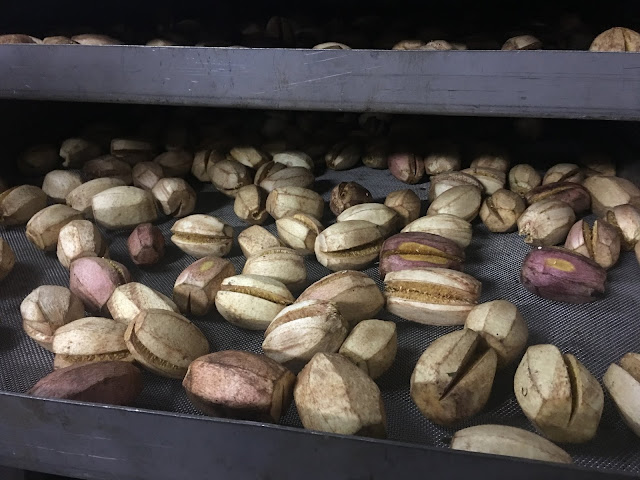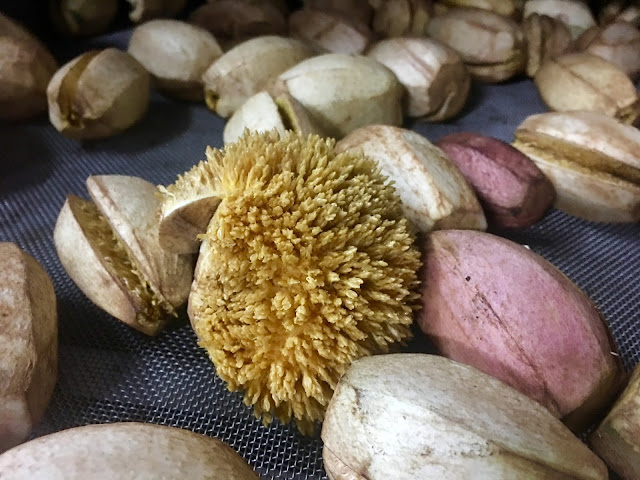Sweet potatoes (Ipomoea batatas) are highly popular in Taiwan. Interestingly, this crop did not originate from Taiwan or Asia, but rather from America. Although it is referred to as a "sweet potato," it is not related to regular potatoes (Solanum tuberosum in Latin).
Ipomoea batatas is native to tropical regions of America. Within the Convolvulaceae family, which consists mostly of herbaceous vines but also includes trees, shrubs, and herbs, there are approximately 50 genera and over 1,000 species. However, Ipomoea batatas is the only crop plant of significant importance worldwide. It is worth noting that many other species within the Convolvulaceae family are actually poisonous.
Sweet potatoes are primarily utilized as a root vegetable, although the young leaves and shoots can also be consumed as greens. The edible tuberous root is long and tapered, featuring a smooth skin that can be yellow, orange, red, brown, purple, or beige. The flesh of sweet potatoes can range in color from beige and white to red, pink, violet, yellow, orange, and purple.
The origin and domestication of sweet potatoes are believed to be in Central or South America, between the Yucatán Peninsula of Mexico and the mouth of the Orinoco River in Venezuela. Sweet potatoes were domesticated in Central America at least 5,000 years ago. They are now cultivated in tropical and warm temperate regions wherever there is sufficient water to support their growth.
After Christopher Columbus discovered the Americas, he introduced sweet potatoes to Isabella I of Castile in 1493 and later to the Island of Hispaniola (Haiti/Dominican Republic) in 1508. Sweet potatoes adapted well to the Spanish climate, and their sweet taste made them popular in Europe. During that time, sweet potatoes were considered a delicacy among the wealthy and were even believed to possess medicinal effects. Europeans believed that sweet potatoes could accelerate menstrual periods and stimulate milk production in women, while also acting as an aphrodisiac for men. Henry VIII of England, for instance, was convinced of the aphrodisiac effect and particularly enjoyed sweet potato pies with spices and sugar.
Sweet Potatoes in Taiwan
In Taiwan, the sweet potato may have been introduced via the Philippines (which was a Spanish colony) to Fujian province. Chen Zhenlong brought sweet potatoes back from Luzon Island in the 1580s. The cultivation of sweet potatoes was encouraged by Governor Chin Hsüeh-tseng. After its introduction to China, sweet potatoes spread mainly in Fujian and Guangdong during the first hundred years. As sweet potatoes helped save the Chinese people from a major crop failure, they began to spread to Jiangxi, Hunan, and Zhejiang in the 17th century. By the middle of the 18th century, sweet potatoes had also reached the Yellow River Basin and further north. However, when sweet potatoes were grown in northern regions, it was necessary to dig up the roots and store them in cellars during winter for preservation.
Sweet potatoes are a high-yielding and resilient crop, suitable for cultivation in the southern area of the Nanling Mountains almost every year. A relief book titled "Saving the Famine," written at the end of the nineteenth century, stated that sweet potatoes could be planted from January to August and harvested from the summer solstice to the beginning of winter.
The exact time of sweet potato introduction to Taiwan is not clear. The first recorded instance of sweet potato cultivation in Taiwan was mentioned by Chen Di in his book "Dōng Fān Jì," written in 1603, suggesting that sweet potatoes were already being grown in Taiwan prior to that time. However, sweet potatoes were not used as a staple food during that period and were instead classified as vegetables.
Gradually, sweet potatoes became a staple food for aboriginal people. The Bunun tribe (布農) even included the planting of sweet potatoes in April and the Sweet Potato Festival (moraniyan/masuadhutan, held in November/December) in their calendar. During the Dutch colonial era, the Dutch did not show much interest in sweet potatoes, instead focusing on encouraging indigenous people to cultivate rice and sugarcane. Ironically, it was sweet potatoes that helped Koxinga defeat the Dutch. Koxinga and his army besieged Fort Zeelandia for nine months, relying on the cultivation of sweet potatoes. There is also a legend suggesting that Koxinga invented oyster omelettes.
To prolong the shelf life of sweet potatoes, Taiwanese people developed a method of long-term storage. They grated sweet potatoes and sun-dried them, enabling dried grated sweet potatoes to be stored for at least a year. Dried grated sweet potatoes accompanied Taiwanese people throughout the Qing Dynasty, the Japanese occupation period, and the early stages of Chinese Nationalist rule.
Just before World War II, the Japanese discovered that sweet potato starch could be fermented to produce ethanol, methanol, butanol, and acetone. A plant for producing these organic solvents was established in Chiayi, but it was destroyed by the US Army Air Force during the war. At that time, sweet potatoes also served as a substitute for staple foods.
The most prosperous period of sweet potato cultivation in Taiwan was between 1950 and 1970. During this time, the cultivated area ranged from 200,000 to 400,000 hectares, and the annual output was between 200 and 340 million metric tons. Sweet potatoes were mainly used as livestock feed and as a supplement to staple foods. The Agriculture and Food Agency promoted the "Three Agriculture Policies" (millets, pig raising, and rice farming). Winter-grown sweet potatoes were utilized to feed pigs, and pig manure was used as compost to enhance rice production.
Over time, sweet potatoes gradually disappeared from the daily diet. The proportion of sweet potatoes as a staple food decreased from 40% in 1945 to 25% in the 1950s and 1960s, and further dropped to 19% in 1965. Meanwhile, the use of sweet potatoes as livestock feed increased from 35% to 50%. However, imported corn eventually replaced sweet potatoes in livestock feed, leading to a decline in the planting area of sweet potatoes. In recent years, sweet potatoes have experienced a resurgence in consumption as a staple food and leafy vegetable, reflecting a growing trend toward healthier diets. As a result, sweet potatoes have become the second most important crop after rice in Taiwan.
Why Taiwanese are called “Sweet Potatoes”?
The first person to propose in official literature that the island of Taiwan is shaped like a sweet potato is likely Professor Yasumoto Yamamoto. In addition to describing the shape of Taiwan using sweet potatoes, he also made references to eucalyptus leaves. According to oral history collected by history scholar Xu Xueji during the Japanese occupation era, this nickname probably originated during that time. Taiwanese individuals who traveled to areas of China controlled by Japan for work faced a difficult situation: on the one hand, they were regarded as pro-China by the Japanese; on the other hand, they were seen as pro-Japanese by the Chinese. As a result, they often refrained from revealing that they came from Taiwan and instead used the nickname "sweet potatoes" to identify themselves.
Another possible reason for the nickname is that people from other provinces came to Taiwan and noticed that sweet potatoes were a staple food among Taiwanese people. They then nicknamed the Taiwanese as "sweet potatoes" and joked that eating sweet potatoes made them dull. When people from other provinces first arrived in Taiwan, they couldn't differentiate between sweet potatoes and taro, often mistakenly purchasing taro instead of sweet potatoes. This led to people from the other provinces being nicknamed "taro".








.jpg)












